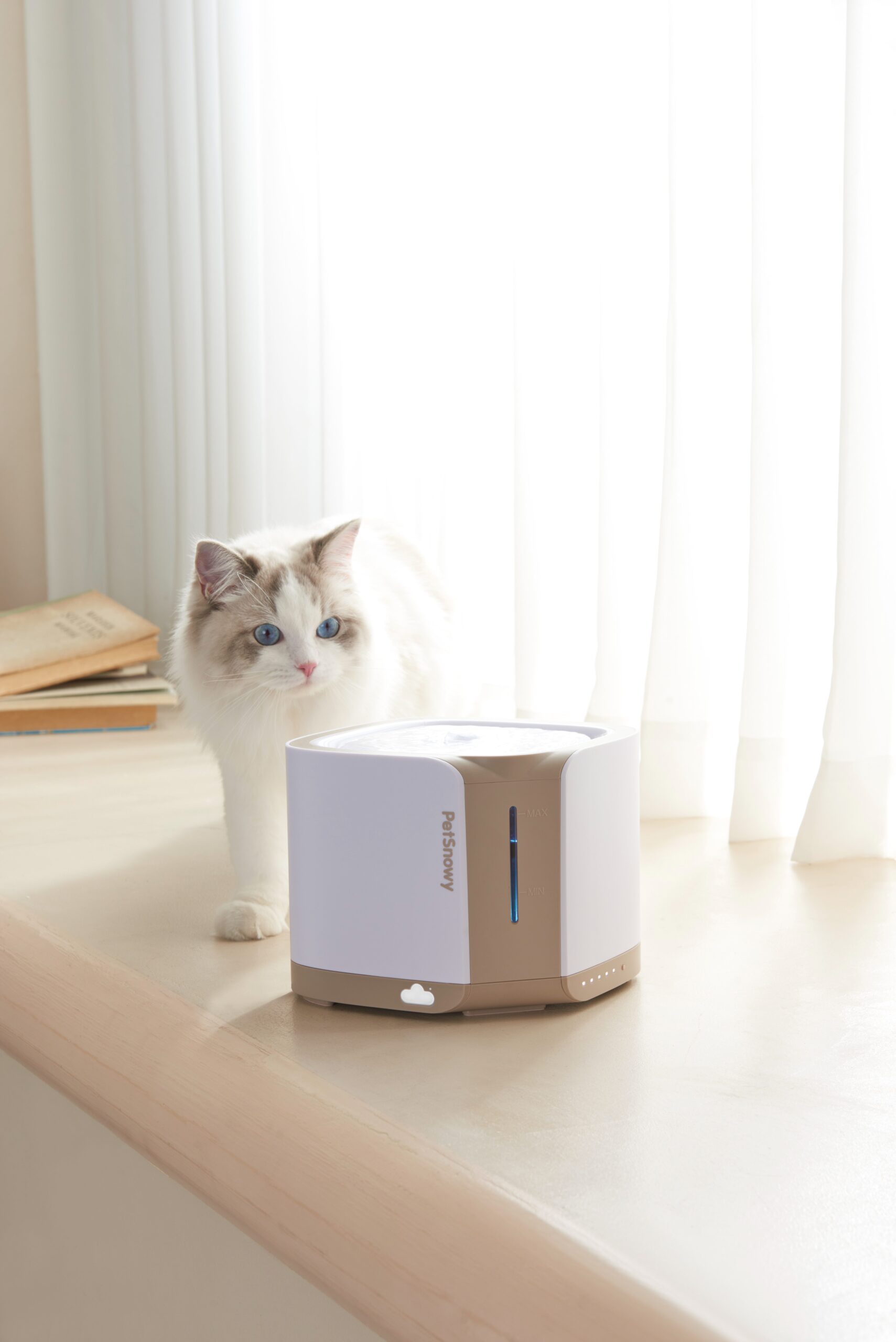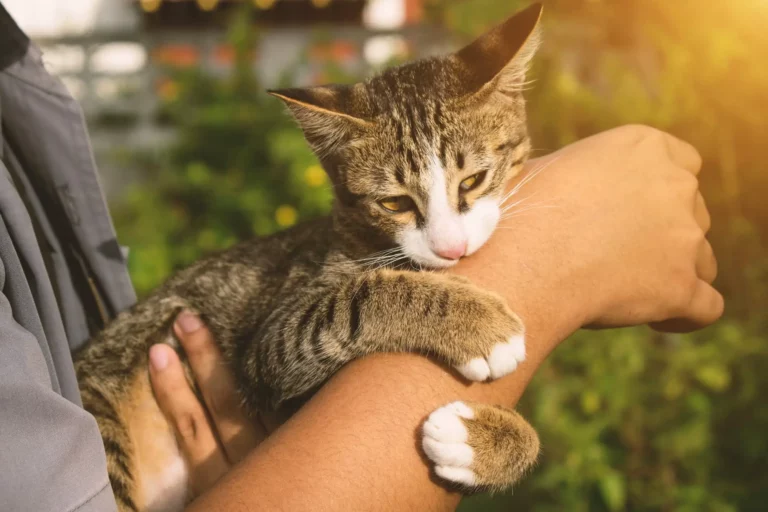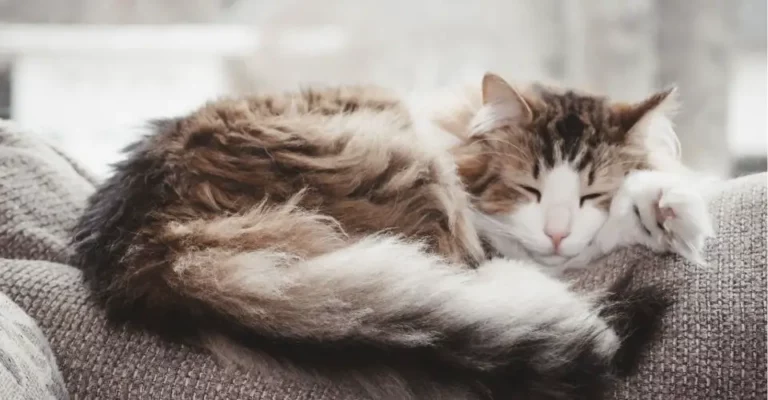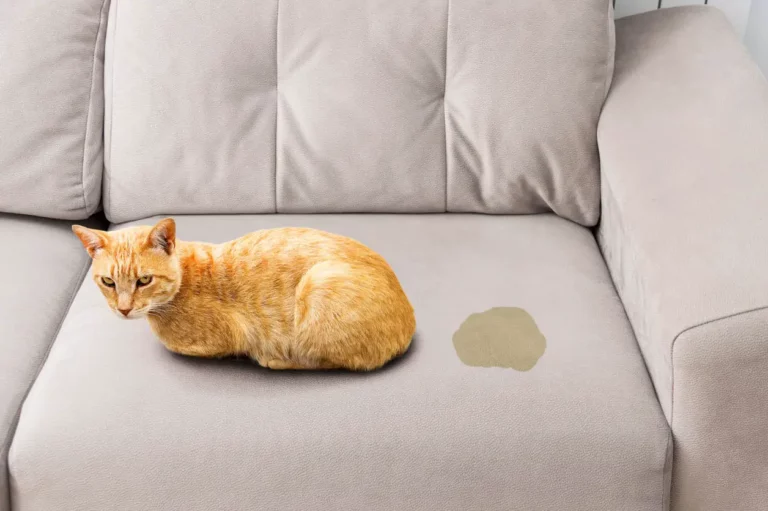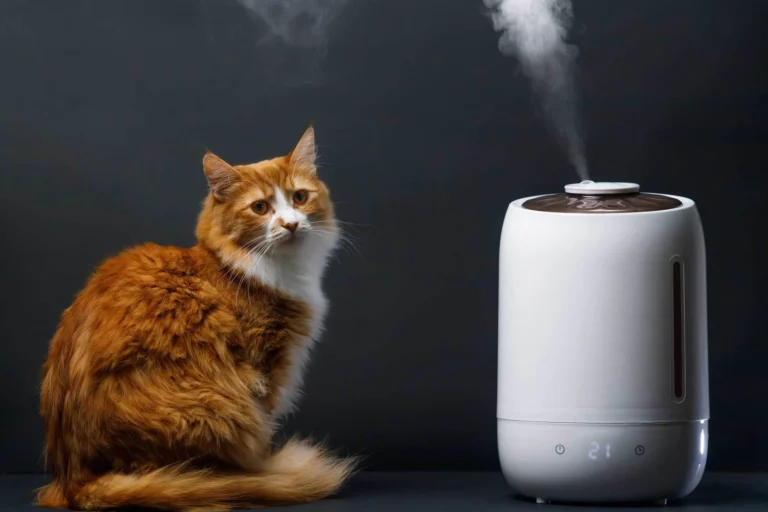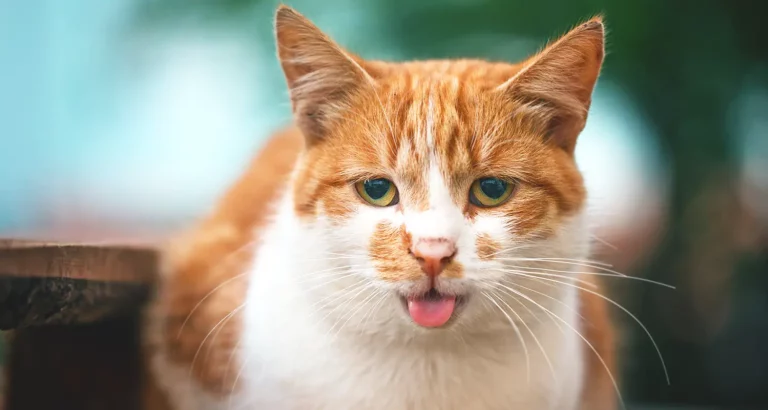Female Orange Cats: Rarity or Common Myth?
Ah, the captivating hues of orange cats! Their fiery fur has always been a source of fascination. But have you ever wondered about the rarity of female cats in this color spectrum? Are Female Orange Cats Rare?
While it’s a commonly discussed topic among cat enthusiasts, the answer might surprise you. Before we delve into the intricacies of genetics and cat colors, let’s quickly address the burning question.
Key takeaways:
- Genetics majorly influence the coloration of cats.
- Orange female cats are less common but not ultra-rare.
- Several myths surround orange tabby cats, leading to misconceptions.
Short Answer: Yes, female orange cats are less common than their male counterparts due to the specific genetic makeup required for a cat to exhibit the orange coloration. Only about 20% of all orange cats are female.
No products found.
The Rarity Spectrum: From Common Myth to Statistical Reality
Every cat lover knows the appeal of the bright and sunny hue of orange felines. But when it comes to the females of this coloration, there are many myths and misconceptions. Let’s dive into the vibrant world of orange cats, breaking down myths, and unveiling truths.
Are Female Orange Cats Rare: Delving into the Facts and Figures
Female orange cats, often referred to as “ginger” or “marmalade” cats, indeed hold a rarer stance in the cat world. The reason lies in genetics. The orange gene responsible for this coloration is located on the X chromosome.
For a female cat to be orange, she needs two X chromosomes with the orange gene, which statistically is less likely to happen than for a male, who needs just one.
Are Female Orange Tabby Cats Rare: Breaking Down the Statistics for Tabbies
When we narrow it down to the tabby pattern – characterized by its distinctive ‘M’ on the forehead – the numbers remain consistent. Female orange tabbies are a delight but are lesser in number compared to their male counterparts.
Are Orange and White Female Cats Rare: A Look at Dual-Colored Female Cats
Introducing another color into the mix, the orange and white combination is seen in both males and females. While the orange hue follows the same genetic rules, the white doesn’t impact the rarity of female cats with this dual shade.
Are Long-Haired Female Orange Cats Rare: Shedding Light on the Fluffier Variants
The length of the fur is a trait separate from color. So, while an orange long-haired female cat might seem exotic, its rarity is more related to the orange hue than the length of its coat.
Are All Orange Female Cats Rare: Clarifying Generalizations
While it’s true that female orange cats are less common, it’s essential not to generalize. Some variations, based on factors like region and lineage, might have higher numbers than others.
Why Are Female Orange Cats So Rare: Delving into Genetics and Evolutionary Reasons
The orange color in cats is a result of the O gene, which turns black pigment into red. Since this gene resides on the X chromosome, and females have two X chromosomes, they need two copies of this gene to become orange, making it rarer.
Are Female Orange Tiger-Cats Rare: The Uniqueness of the Tiger-Striped Variants
Tiger-striped or mackerel patterns are just one of the many tabby designs. The genetic play remains the same, keeping female orange tiger cats in the rarer bracket.
Are Fluffy Orange Female Cats Rare: Differentiating Between Long-Haired and Fluffy
“Fluffy” often gets mistaken for long hair. However, fluffiness refers to the coat’s thickness and volume. The rarity in fluffy orange female cats lies primarily in their color rather than their coat’s texture.
What Are the Odds of a Female Orange Cat: Statistical Insights
Statistically speaking, only about 20% of orange cats are females. This number can slightly vary based on regions and breeding patterns but remains a good average globally.
How Rare Are Girl Orange Cats: Highlighting Gender-Based Differences
Reiterating the point: female orange cats are rarer because of the genetic need for two orange genes, which is statistically less probable than in males.
How Much Are Orange Female Cats Worth: Market Dynamics and Adoption Costs
While rarity can drive up prices in some markets, it’s essential to adopt based on love and compatibility. Many orange female cats await loving homes in shelters, proving that value is more than just monetary.
Table could not be displayed.Orange Female Cat Personality: Debunking and Confirming Personality Traits
There’s a myth that orange cats, regardless of gender, are more friendly and affectionate. While many orange felines are indeed cuddly, it’s not a hard rule. Every cat has its unique personality.
Are Orange Female Cats Sterile: Addressing a Common Misconception
There’s a misconception that female orange cats are sterile. This isn’t true. Their color has no bearing on their reproductive capabilities.
Are Male Orange Cats Rare: Giving a Comparative Perspective
While the focus is often on the rarity of female orange cats, it’s worth noting that male orange cats are more common due to genetics. However, they’re not “rare” in the general sense.
Orange Female Cat Health Problems: Delving into Specific Health Concerns Related to Their Coloration
Some believe that the orange coloration can lead to specific health problems. While individual cats can have health issues, there’s no concrete evidence linking the orange hue to specific diseases or health concerns. Always consult with a veterinarian for any health-related questions about your cat.
Dive into Genetics: Understanding Cat Coloration
The world of genetics, especially when it comes to our feline friends, is both enthralling and intricate. To understand the mystery behind the rarity of female orange cats, we must deep dive into the realm of genes, chromosomes, and the interplay of these elements in determining a cat’s coat color.
The Role of X and Y Chromosomes
In mammals, the sex of the offspring is determined by a pair of sex chromosomes – X and Y. Females have two X chromosomes (XX), and males have one X and one Y chromosome (XY). These chromosomes play a vital role in the coloration of cats, especially when discussing the orange hue.
Interestingly, the gene responsible for the orange and black coat colors in cats is located on the X chromosome. This gene setup is why the coloration phenomenon differs between male and female cats.
For males, their single X chromosome will determine whether they are orange or black. In contrast, females can have a combination of genes on both of their X chromosomes, leading to three potential color outcomes: orange, black, or calico/tortoiseshell.
How Genes Influence Fur Color
A cat’s coat color is the result of various genes working in tandem. These genes dictate everything from the primary color of the fur to intricate patterns and shades. Two main pigments influence cat coloration: eumelanin (responsible for black, brown, or cinnamon hues) and pheomelanin (resulting in red or orange tones).
Genes act like switches, turning on or off specific colors and patterns. For instance, a cat might have a gene for black fur, but if another gene that suppresses black is present and “turned on,” the cat may not show that color at all.
The Fascinating Case of the Orange Gene in Female Cats
The gene that determines if a cat will be black or orange is symbolized as “O” for orange and “o” for not-orange. Since this gene is located on the X chromosome, the dynamics of its expression are tied closely to the sex of the cat.
For a female cat to be entirely orange, she needs to inherit the “O” gene from both parents, making her genotype “OO”. On the other hand, if she inherits an “O” from one parent and an “o” from the other, she will be a calico or tortoiseshell.
Males, with just one X chromosome, will be orange if they inherit an “O” and black if they inherit an “o.”
This genetic play explains the rarity of orange females. For them to exist, specific conditions in the genetic lottery have to be met, making them a less frequent but delightful occurrence in the feline world.
Debunking Myths and Unraveling Facts Surrounding Orange Cats
Cats, with their wide array of colors and patterns, have been the subject of myths, legends, and misconceptions for centuries. Orange cats, often referred to as “gingers,” are no exception.
Let’s explore some of the most common myths surrounding these fiery-furred felines and determine where the line between fiction and fact truly lies.
The Misconception of “Ginger” Cats Being Predominantly Male
A popular belief that many cat enthusiasts might have come across is the idea that all ginger cats are male. While it’s true that male orange cats are more common than their female counterparts due to genetic reasons, saying all gingers are male is an exaggeration.
As previously discussed, female orange cats can exist but require a specific combination of genes from both parents. The correct statement here would be: ginger cats are more likely to be male, but female gingers certainly grace our world with their presence.
Addressing the Belief that Female Orange Cats Have Different Personalities or More Aggressive Tendencies
Another widespread myth posits that female orange cats are not only rare but also possess unique personality traits or display more aggressive behavior. Personality traits in cats, much like humans, are a blend of genetics and environment.
The color or pattern of their coat has minimal influence, if any, on their behavior.
While individual cats, regardless of color, can have unique personalities, there’s no scientific evidence to suggest that female orange cats are inherently more aggressive or distinct in behavior than cats of other colors.
So, if you come across a spirited ginger female, know that her vibrant character isn’t necessarily a product of her color!
Setting the Record Straight on the Gender-Color Correlation
The gender-color correlation in cats is rooted in genetics. The X chromosome carries the gene for black and orange, which leads to the fascinating dynamics of cat coat color inheritance we delved into earlier.
However, linking coat color too closely with gender, especially in broad strokes, can perpetuate misconceptions.
To simplify: While there is a genetic basis that makes male gingers more common, it’s essential to remember that female gingers exist and aren’t as astronomically rare as some myths suggest.
Every cat, regardless of color, is a unique blend of personality, quirks, and charm, deserving of love and understanding beyond any stereotypes.
Distinguishing Features and Significance of Orange Cats
Orange cats, with their warm and inviting hue, have always been a favorite among feline aficionados. From literature to the annals of history, they’ve made their mark. Beyond their striking color, orange cats boast a range of patterns and are often associated with certain personality traits.
Here’s a closer look at what makes these amber-coated beauties stand out.
Different Patterns: A Visual Treat
Orange cats, often generalized under the “ginger” or “tabby” label, display a variety of patterns that can make each one uniquely identifiable:
- Mackerel: This pattern resembles fish bones, with thin, parallel stripes running vertically down the cat’s body. It’s the most common pattern among orange cats, making them look particularly sleek and agile.
- Classic: Often called “blotched,” this pattern showcases broader, swirling patterns on the cat’s sides, akin to a marble cake. The classic pattern gives the cat a majestic and regal appearance.
- Ticked: Unique and mesmerizing, ticked patterned cats have individual hairs that are striped with alternating colors. From afar, they might seem solid colored, but a closer inspection reveals their intricate coat details.
- Spotted: As the name suggests, these cats are sprinkled with spots, which can vary in size. They give off a wild aura, reminiscent of leopards or cheetahs.
Personality Traits Commonly Linked with Orange Cats, Irrespective of Gender
Over the years, many cat lovers and enthusiasts have tried to link coat color with personality. While it’s essential to note that personality can vary widely even among cats of the same color, orange cats are often described as:
- Friendly and sociable
- Playful and energetic
- Curious and adventurous
However, it’s always good to remember that individual experiences can vary, and every orange cat is a unique individual with its quirks and temperament.
The Historical and Cultural Significance of Orange Cats Worldwide
Across different cultures and eras, orange cats have often been revered or associated with various myths:
- In many cultures, they’re seen as bearers of good luck.
- They’ve often been the companions of sailors, believed to bring favorable winds.
- In ancient Egypt, cats, including the orange ones, were highly revered and often depicted in art and sculptures.
- Literature too hasn’t remained untouched. Think of the Cheshire Cat from “Alice in Wonderland” or “Garfield” from comic strips.
In conclusion, orange cats, with their distinct patterns, personality traits, and cultural significance, have left an indelible mark on human hearts and histories. Whether you’re mesmerized by their patterns or their historical significance, one thing is clear: there’s more to orange cats than meets the eye!
Caring for Your Orange Cat: Health, Personality, and More
The radiant hues of orange cats have long captivated many a cat lover. Their vibrant coat color, however, does not exempt them from the usual care needs of felines, nor does it denote specific health concerns related to their coat.
That said, caring for your orange cat involves a comprehensive approach, considering their health, grooming, diet, and interactions.
Health Specifics and Grooming Needs
While orange female cat health problems are not inherently distinct from those of other cats, a few pointers can make their care regimen smoother:
- Regular Vet Check-ups: Ensure your orange cat undergoes regular veterinary check-ups. These help in the early detection of common feline health problems.
- Grooming: Depending on whether your cat is long-haired, like the fluffy variants, or short-haired, adjust the grooming routine. While long-haired cats might need more frequent brushing to prevent matting, short-haired variants can often do with a weekly grooming session.
- Skin and Coat Health: An orange cat’s vibrant coat should remain smooth and lustrous with proper care. Regular grooming helps spot potential skin issues early on, like allergies or fungal infections.
Dietary Requirements or Preferences
Cats, irrespective of their color, are obligate carnivores. This means their diet primarily revolves around meat. However, there are a few things to consider for your orange cat:
- Balanced Diet: Ensure that your cat’s diet is rich in protein. Brands that use real meat, rather than fillers, can be more beneficial.
- Water Intake: Cats aren’t always the best when it comes to water consumption. Encourage hydration by providing fresh water daily or considering a cat water fountain which many felines find appealing.
- Treats and Snacks: While occasional treats are fine, ensure they don’t constitute a major part of your cat’s diet. Excessive treats can lead to weight gain.
Interactions and Dynamics with Other Animals
Orange cats, like all felines, have individual personalities. Some might be outgoing and sociable, while others can be reserved:
- Introduction to Other Pets: If introducing your orange cat to other pets, do so gradually. Ensure supervised interactions initially to gauge compatibility.
- Claiming Territory: Cats are territorial creatures. Provide ample spaces for climbing, hiding, and resting to reduce potential conflicts in multi-pet households.
- Observing Behavior: It’s crucial to observe your orange cat’s behavior around other animals. If they seem stressed or agitated, it might be necessary to rethink the living dynamics or seek advice on making multi-pet living harmonious.
Caring for your orange cat is a delightful responsibility. With a mix of regular health check-ups, proper grooming, a balanced diet, and an understanding of their unique personalities, you can ensure a happy and healthy life for your feline companion.
Conclusion
The mesmerizing hue of orange in cats, especially in females, has intrigued and charmed cat lovers for generations. While the rarity of female orange cats is rooted in the complexities of genetics, it’s the individual personality and charm of each cat that truly captures our hearts.
These fiery-furred felines, whether male or female, are more than just their coat color. They’re companions, family members, and sources of endless joy and amusement.
Whether you’re fortunate enough to share your home with a rare female orange cat or any other feline friend, one thing remains clear: every cat is unique, and every cat is special.
As we unravel the mysteries behind their coat colors, we’re reminded of the deeper bonds we share with these incredible creatures.
Additional Resources
For those eager to delve deeper into the world of orange cats and expand their understanding, here are some invaluable resources:
- Books on Feline Genetics:
- Robinson’s Genetics for Cat Breeders and Veterinarians by Carolyn M. Vella, Lorraine M. Shelton, John J. McGonagle, and Terry W. Stanglein.
- The Genetics of the Cat by Leslie A. Lyons, PhD.
- Websites:
- International Cat Care (icatcare.org): A comprehensive portal dedicated to cat health, behavior, and care.
- The Cat Fanciers’ Association (cfa.org): For insights on cat breeds, standards, and genetics.
- Forums and Communities:
- TheCatSite (thecatsite.com): A vibrant community of cat lovers discussing a myriad of cat-related topics.
- Reddit r/cats: A thriving subreddit for cat enthusiasts sharing stories, photos, and knowledge.
- Online Courses:
- Coursera: Offers courses on animal genetics which occasionally touch on specifics of feline genetics.
- Documentaries & Videos:
- The Lion in Your Living Room: A Netflix documentary that explores the history, behavior, and genetics of domestic cats.
- Various YouTube channels are dedicated to feline care, behavior, and genetics.

